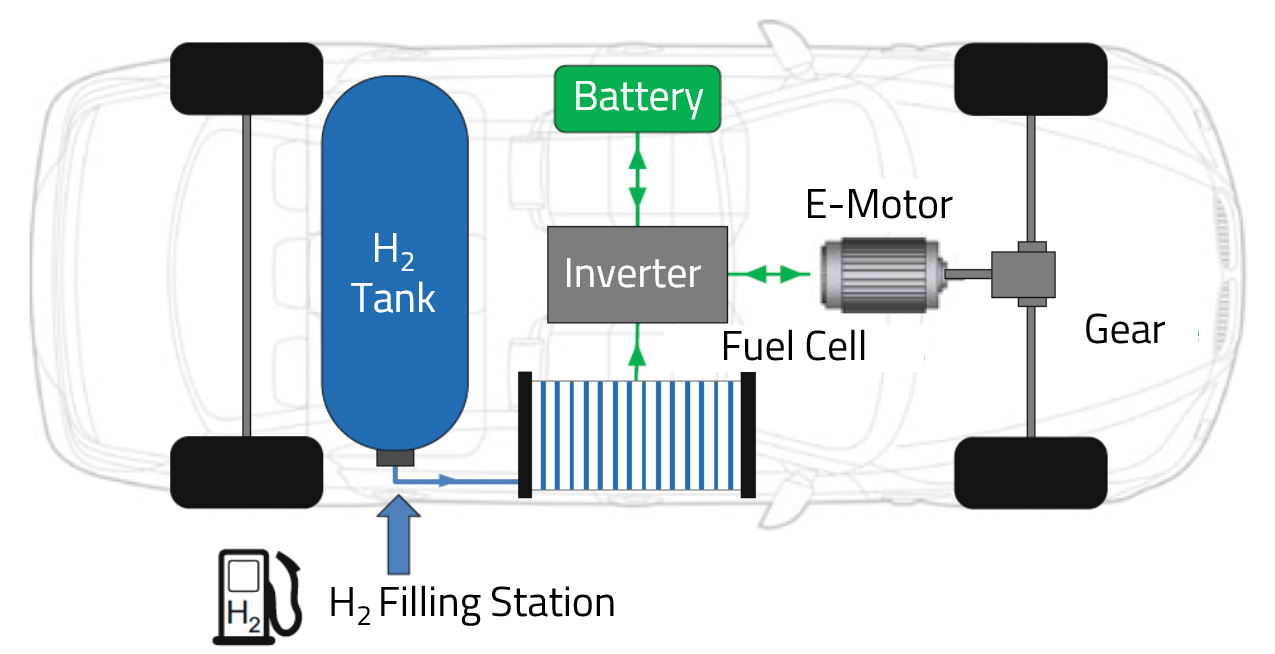4.2 Applications in the Mobility Sector
Passenger Cars
Hydrogen-powered fuel cell (FC) electric vehicles are one way of enabling motorised private transport without the emission of greenhouse gases and other air pollutants. Hydrogen-powered passenger cars have been under development for several decades, are today hardly different from cars powered with fossil fuels in terms of functionality and comfort, and can be purchased by private customers.
The figure below shows the most important technical components of a car with a FC powertrain. The core element is the FC, in which the hydrogen is converted into electrical energy. Hydrogen-powered vehicles usually use Proton Exchange Membrane Fuel Cells (PEMFC). Special pressure tanks made of plastic reinforced with carbon fibres (so-called Type IV pressure tanks) are used to store the hydrogen. These pressure tanks must be especially stable, as a pressure level of 700 bar has become established in the passenger car sector for on-board hydrogen storage. The electrical energy generated by the FC is used to drive an electric motor, which provides the movement of the vehicle's axle and wheels via a transmission. Since the FC generates direct current, but electric vehicles almost exclusively use alternating current motors, inverters are required. In order to cover load peaks that occur during acceleration, for example, part of the electricity generated in the FC is temporarily stored in a battery.

Although some car manufacturers, especially from Asia, are offering FC passenger cars as series models, their number on the roads has been small up to now. For instance, the number of registered FC cars in Germany at the end of 2021 was only around 1,400. In the USA and some Asian countries, there are significantly more FC cars in use, but even here they play only a minor role in the overall market. A major obstacle to the widespread use of FC passenger cars is not only the high price of the vehicles but also the limited availability of hydrogen filling stations. In Germany there are currently 90 hydrogen filling stations (as of the end of 2021) where FC passenger cars can be refuelled.